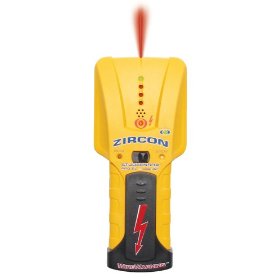Home
Woodworking
Hand Railings
Skirt Boards
Crown Molding
Bidding
Wainscoting
Chair Rail
Interior Doors
Closet Doors
Exterior Doors
Installing Doors
Baseboard
Installing Baseboard
Windows
Install Cabinets
Hand Tools
Power Tools
Blog
Contact
Link Partners
Tool Reviews
About Me
Can't Find Something?
Check The Sitemap
Site Map
Woodworking
Hand Railings
Skirt Boards
Crown Molding
Bidding
Wainscoting
Chair Rail
Interior Doors
Closet Doors
Exterior Doors
Installing Doors
Baseboard
Installing Baseboard
Windows
Install Cabinets
Hand Tools
Power Tools
Blog
Contact
Link Partners
Tool Reviews
About Me
Check The Sitemap
Site Map
[?] Subscribe To This Site
Stud Finders
The Best Stud Finders Out There

What is a stud finder though, and how does it work? Well, these handheld gizmos emit electric fields that go through the wall or floor. Any changes in the field are detected by the instrument as you slide it over a surface. Any material that has a higher density than air changes the strength and nature of the field and the instrument tells you that you have reached lumber. Newer models can even find electrical wires or pipes or help you find metal in concrete.
There are any number of models and makes available on the market, and one cannot blame the homeowner and the do-it-yourself enthusiast for being confused and disoriented. What do you buy? Which ones are the best for your needs? What does each type do? How user-friendly are they?
The type I use the most is the Zircon stud finder. Zircon has a couple different models and I prefer zircon because of the compact size for carrying in my tool belt and availabilty in my area. There are any numbers of questions that demand answering before you can bring home the tool. So, here are some good options to consider while you shop for your next stud sensor.
. The stud sensor
. The Sears Craftsman approach-reading stud sensor is a simplified instrument, with a deep scan option, that's ideal for the not-so-mechanically-inclined. It calibrates by being held up to the wall while powering on.
. The Ryobi stud-approach LED and tape measure is a combination stud sensor and tape measure that combines 8-ft. of tape with a stud sensor to make handyman work around the home seem easy. It scans automatically to maximum depth and calibrates in 4 seconds.
. The Strait-Line stud finder is a self-marking stud sensor
. The Stanley combination IntelliSensor DigiScan finds wood, metal and wiring, without changing modes. The sensitivity can be changed to reach different depths.
. The Black & Decker's Bulls Eye is a combination laser level and stud finder, simplifying the process of finding as well as marking frames for things like installation of shelves and cabinets.
. The Gardner Bender stud seeker and bullet level is the size of a fountain pen but just as accurate as tools twice as expensive and large. It activates and calibrates by powering on when placed on the surface you wish to check. There is also a bubble level and four 1.5-volt button-cell batteries.
Consider the pros and cons of all the available models, compare it to exactly what you need, consider what you mean to use it for, and make a wise choice when shopping for stud sensors.
Return To Main Tool Reviews Page
Return From the Stud Finders Page to Home - Finishcarpentryhelp.com.


